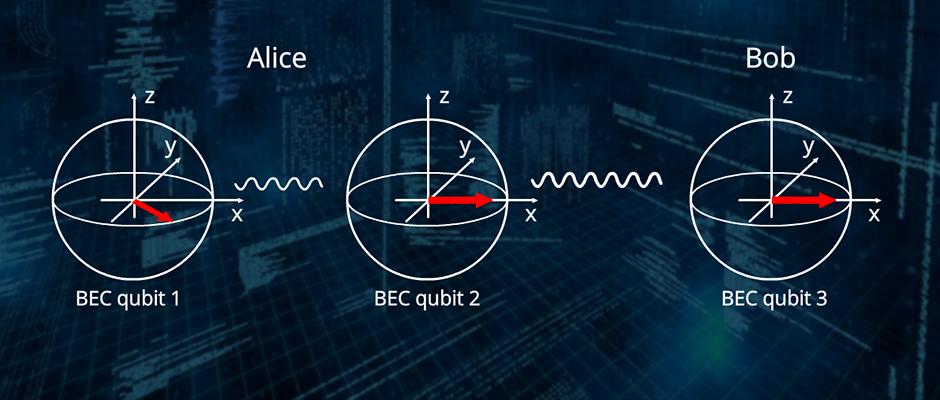Professor Tim Byrnes of NYU Shanghai and collaborators have developed a method of teleporting objects large enough to be seen by the naked eye.
Teleportation is a method of sending an object (or more precisely, the quantum state of an object) from one location to another without sending any information relating to the object itself.
The first experiments demonstrating teleportation were performed in 1997 using photons, the particles that make up light. Teleportation between atoms has also been performed.
However, teleporting objects larger than atoms or photons has proven to be difficult. Teleportation of anything as large as a person, similar to what is seen on science fiction programs such as Star Trek, is still thought to be virtually impossible using these methods.
The reason is that quantum mechanics governs the microscopic world and tends to be difficult to observe for objects larger than tiny objects. Teleportation relies crucially on the quantum mechanical phenomenon called entanglement, which Einstein famously called a "spooky action at a distance." For large objects, the entanglement disappears almost as soon as it is created, making it useless for such tasks.
The research, carried out by Byrnes and Alexey Pyrkov, found a way to overcome this by discovering a new type of entangled state that should survive for macroscopic objects. Using this entangled state, it was shown that teleportation of thousands of atoms, or larger, is possible.
The method uses a new state of matter called a Bose-Einstein condensate, which was experimentally realized in 1995 and awarded the Nobel Prize to its discoverers a few years later. The atoms are cooled to a several billionths of a degree above absolute zero and form a single quantum state.
Does this mean we might be able to teleport Captain Kirk in the near future? While the finding is a step in the right direction, there is still work to be done. The method works for a larger class of states than previously possible—but still not large enough for a complicated object such as a human.
The current work improves on a previous scheme introduced by the team to a more general set of states. The ideas may be used to develop quantum processors that use macroscopic objects instead of single atoms or photons, providing a new route toward realizing a quantum computer.


